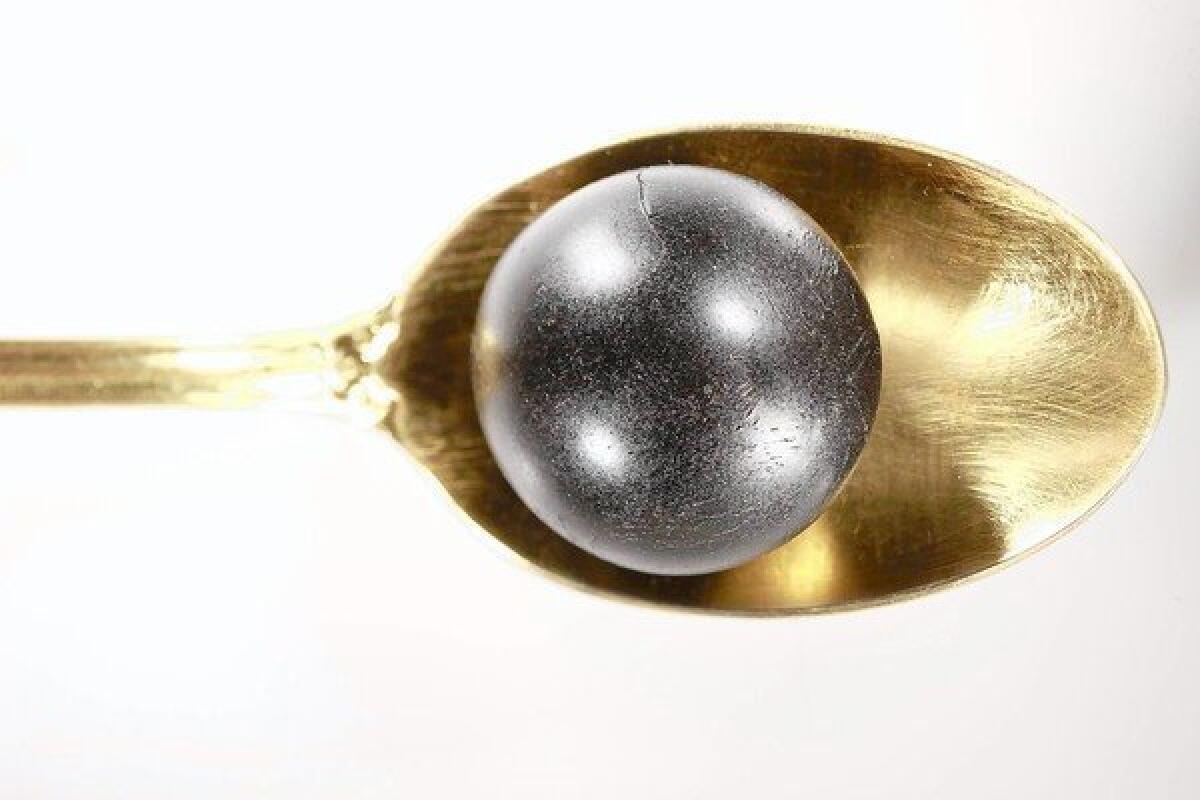Shilajit is unproven yet touted as a panacea for many ills

It has a smoky, bitter taste, a deeply unpleasant odor and bears a close resemblance to black gobs of tar. Pricey tar, mind you: 10 grams (a month’s supply) will set you back $80.
The substance, called shilajit, is an ancient ayurvedic medicine. On websites, you’ll read that it has anti-anxiety, “rejuvenating” and aphrodisiac properties and is a panacea for many ills, from diabetes to bronchitis — and, further, that it was praised by Aristotle, prized by Genghis Khan and was the closely guarded secret weapon of Soviet cosmonauts and Olympic athletes. Whew. Now it’s hit Hollywood, and “Big Love” actor Branka Katic, for one, is a fan. “It brightens my view of the world. My head feels calmer and I have more energy,” she says.
What exactly is this stuff? Shilajit consists of ancient plant matter transformed over millions of years into a black substance that oozes from the rocks of the Himalayas. Johann Helf, founder of Los Angeles-based importer Lotus Blooming Herbs, says he navigated a narrow Himalayan pass in a snowstorm, with a Buddhist monk — praying all the while — riding pillion on his motorcycle, to obtain a source of shilajit from a village in Ladakh, India. The curious and the hopeful are now sampling the stuff at the Hollywood Farmers Market.
Helf is quick to distance his water-purified product from processed shilajit capsules manufactured by Dabur India Ltd. that were banned in Canada in 2005 after authorities there found heavy metal contamination. His own supply, he says, has been tested for heavy metals in aU.S. Food and Drug Administration-registered lab.
Scientific analysis shows shilajit contains more than 85 minerals and fulvic acid, an antioxidant heavily touted these days by supplement marketers. Ayurvedic practitioners advise starting with a rice grain- to pea-sized portion dissolved in warm milk or hot water, taken three times daily for general well-being.
Dr. Mary L. Hardy, medical director at Simms/Mann UCLA Center for Integrative Oncology, says it has been widely used for thousands of years across the mountain regions of Central Asia and Northern India. Clinical studies on animals have shown positive results in memory and anti-stress enhancement, as well as antioxidant, anti-diabetic and immune-enhancing properties.
Many of those studies were poorly controlled or involved unreasonable doses, though, and good human studies are thin on the ground. Still, “just because there is limited clinical evidence of benefits in humans doesn’t mean it wouldn’t be valid, just that no one has done the work yet,” Hardy says. “Personally, I would probably try it, although I would ask to see validation of safety testing for heavy metals first.”
More to Read
Start your day right
Sign up for Essential California for news, features and recommendations from the L.A. Times and beyond in your inbox six days a week.
You may occasionally receive promotional content from the Los Angeles Times.






